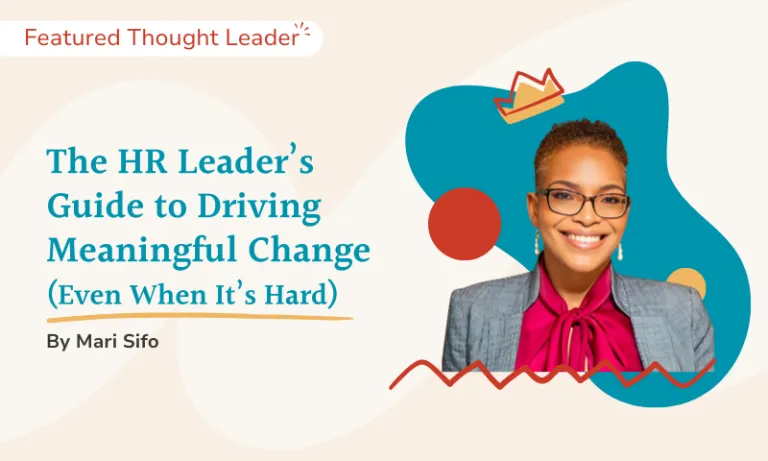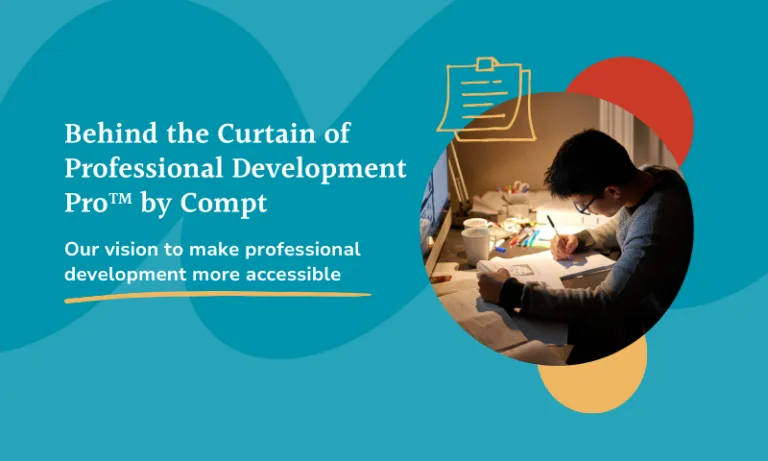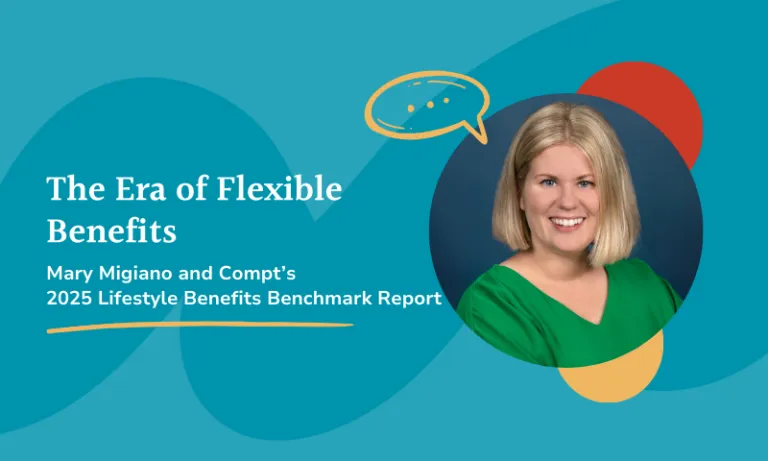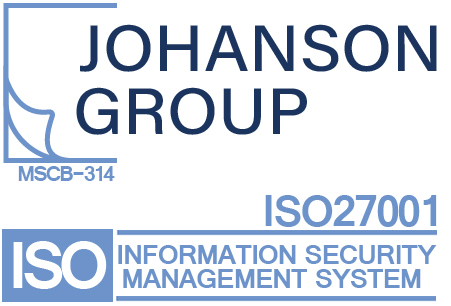Your employees know when the company is growing, evolving, and making more money. They also know their efforts directly shape that.
An engaged workforce performs better, and the best way to motivate employees is to share the love with them.
Employee incentive programs reward employees with the compensation they deserve and give them a reason to continue contributing.

The Current Problem With Employee Retention
Low employee engagement has been an ongoing issue since the pandemic. Although it’s gotten better, numerous obstacles stand in the way of keeping employees motivated.
Engagement is harder to achieve these days.
New insights from Zenefits show that 63% of businesses with between 50 and 500 workers say employee retention is harder than hiring.

In addition, 70% of all small and mid-sized businesses felt the strain of employee retention, and one in three expected an employee’s tenure to be less than a year.
Despite their ability to recognize (through changed behavior) when an employee is about to leave, most employers have been unable to fix this problem.
Employees are no longer connected to the places they work.
According to Gallup’s State of the Global Workplace: 2024 Report, less than one-quarter (23%) of today’s employees are actually in and enthusiastic about their work. 62% are not engaged, and 15% are actively disengaged.
(Gallup)
Such high levels of disengagement cost $8.9 trillion in lost global GDP.
More than half of the global workforce is looking for a new job as we speak. And for most, all it would take to make the final push is a job offer with a slightly better benefits package.
More than half of the global workforce intends to leave their current role.
And 54% of employees also told Gallup they think it’s a good time to find a job where they live, making this one of the most critical times to find ways to keep workers motivated and engaged.
(Gallup)
U.S.-centric research confirms this data — a 2024 study by ResumeTemplates.com found that 60% of workers are planning to look for new jobs in 2025, and one-third are willing to quit without another job lined up.
For most, all it would take to make the final push is a job offer with a slightly more competitive benefits package or a better rewards and recognition program.
63% of employees say benefits are among the most crucial deciding factors when evaluating new roles, and employees who are adequately recognized for their work are 65% less likely to be actively looking for another job opportunity.
Stress is at record highs on a global scale.
Gallup’s report also found that more employees than ever can’t go a single day without feeling stressed about something work-related.
(Gallup)
According to the study, 41% of people felt stressed “during a lot of the day”.
There’s a tremendous war for talent…
…and it isn’t going to stop. Today’s employees are looking for more than just a steady paycheck — they want a company culture that aligns with their values, growth and development goals, and a healthy work-life balance.
Employers need to constantly adapt and evolve their employee retention strategies to compete for the best talent.
Employees keep looking for jobs and then taking them because they’re looking for something they can’t find.
Aside from the data (which also shows this), real-time employee behavior makes it crystal clear: Companies, as a whole, are missing the mark on what matters most to their employees.
The result? Worldwide inefficiency, despite impacting most organizations, is a solvable issue.
How can we fix it, exactly?
Effective employee incentive programs are the perfect place to start.
How do employee incentive programs work?
An incentive program is an employee engagement strategy designed to motivate and reward employees for their hard work, achievement, or top-line contribution. By incentivizing positive behaviors and outcomes, employers can create a much better company culture while giving employees more reasons to stay and contribute.
A typical program follows this formula:
1. You set a goal or benchmark for your team.
Goals are specific to the organization and revolve around a key performance indicator (KPI) that helps you gauge employee performance.
For example:
- Sales – number of sales demos booked, new deals closed, net new revenue
- Customer success – resolution time, customer satisfaction score, upsells and cross-sells
- Marketing – email conversion rate, ad click-through rate, content downloads, newsletter signups
- Product development – new feature development completion, sprint cycle completion, product launch success
These goals should be quantifiable and follow a set timeline. For instance, a goal may be to “increase sales by 25% in the next six months,” or you may tell your sales team, “Anyone who books X demos this month receives Y.”
2. You establish meaningful and attractive employee rewards.
Most likely, you’re already tracking these KPIs-employee incentive programs aim to raise the stakes.
Monetary incentives like bonuses and spiffs are a popular option, but you can also get creative here. You might offer gift cards, additional vacation days, or all-expenses-paid conference tickets/trips.
To arrive at an incentive that your employees will respond to, it doesn’t hurt to ask them. Mention you’re setting up an incentive, then have them take a vote on the types of rewards they’d most like to see.
3. You track progress and measure results.
Tracking your employees’ activities in CRM, marketing automation, or project management software will connect the dots between actions and rewards.
You’ll review the results once the time frame is up and determine who earned those rewards.
The Value of an Employee Incentive Program
Incentive programs are among the best ways to improve employee morale and foster an environment of recognition. Rewards have a powerful way of motivating employees and inspiring them to give their all. And as you may already know, motivated employees are your team’s most productive and creative members.
Incentive programs have their roots in psychology – Cornell research finds that early positive reinforcement increases intrinsic motivation, meaning the more rewards employees receive (and the faster they receive them), the more likely they are to perform at their peak capacity.
According to the study, incentive programs motivate two-thirds of participants, improve performance by 44%, and yield a 79% success rate for this exact reason.
10 Employee Incentive Ideas to Increase Engagement
Not all incentive programs are created equal. If you want Cornell-research-level results, you need a rewards system that motivates your employees and fits in with the rest of your outreach.
Here are 10 proven ideas to get you started:
1. Recognition, Then Rewards
There is a huge business case for employee recognition. More than one-third of employees say it’s the most important role a manager can play in their success and job satisfaction, and 82% agree that it’s an essential contributor to their overall happiness at work.
Still, a 2023 study carried out by Workhuman and Gallup found that just 36% have one in their current roles, underscoring a huge gap in recognition today.
Building a recognition program is a twofold effort — social recognition first, then monetary recognition.
Social Recognition
Social recognition describes public recognition with no monetary value attached. This may include shout-outs, awards, certificates, or highlights on the company blog or social media. The purpose of awarding these types of recognition is to acknowledge employees for their hard work in a public setting.
For nearly all employees, cash isn’t the sole motivator (even in commission-driven roles). By offering social recognition at both a top-down and peer-to-peer level, you’ll increase your engagement rates even more.
Monetary Recognition
Putting your money where your mouth is is the logical next step. In a recognition and rewards incentive program, “monetary” employee incentives don’t actually have to be money, either.
It can include tangible rewards like:
- Gift cards
- Gym memberships
- Electronics
- Travel
- Free meals
- Extra vacation days
- Discounted services from partner companies
Since the social/monetary recognition workflow covers all the bases when it comes to giving your employees their due credit (i.e., they’re affirmed publicly, then paid out what they’re owed), there’s little opportunity for bias or subjectivity. For that reason, this strategy is a core element of almost all impactful employee incentive programs.
2. Employee Referral Programs
The cost of filling a standard role is now just shy of $5,000. But experts agree that the total cost of recruitment for higher-impact positions could be up to four times a year’s salary.
No matter which way you spin it, cutting a current employee a $2,000 check for referring a successful hire will never equate to the overall cost of recruitment. Not even half.
There are several reasons 84% of companies use referral programs:
- Employee referrals are usually better culture fits.
- They are considerably faster to hire.
- They stay with the company considerably longer.
- They generally show higher levels of employee satisfaction.
- It’s (practically) free recruitment.
Since they’re already acquainted with at least one member of the current team, they have a higher chance of fitting in with their peers, feeling comfortable in the workplace, and enjoying their day-to-day responsibilities. The less it feels like work, the more motivated and productive they are.
3. Profit Sharing
Profit sharing is typically an alternative to a 401(k) plan or retirement benefits, and it allows employees to benefit from your company’s growth without sacrificing their own compensation.
In the context of an employee incentive program, profit sharing should be a part of your employee bonus program. That way, you encourage employees to work toward the company’s financial goals as an interconnected unit.
In practice, that would look something like this:
“For every $1,000 in profits the company earns, each employee will receive a bonus of X%.”
A profit sharing incentive strategy works well primarily in two scenarios:
- The budding startup. Startups usually don’t have a whole lot of infrastructure. They don’t have well-defined rules and methodologies, so they need agile, creative teams that can adjust to different needs. Profit sharing encourages an entrepreneurial mindset within these teams and creates an “all hands on deck” mentality.
- The established business. Established businesses have the opposite problem-they’re often stuck in their ways and unable to innovate quickly enough to keep up with the competition. In this case, profit sharing incentivizes employees to solve problems creatively and creates a sense of ownership among team members who want to see their ideas come to fruition.
High-performing enterprise sales reps love profit sharing the most-if they close a deal worth six or seven figures, there’s a chance they walk away with a bonus worth more than their base salary.
4. Health and Wellness Incentives
Now… We’re not saying you should dangle health benefits over your employees’ heads like they’re a carrot on a stick. You definitely need health and wellness benefits at the core of your employee benefits package.
But you can use health and wellness incentives as an attractive add-on that gets your employees to put as much energy into their work as they do into their workouts.
Here are a few ideas:
- Reimbursement for gym memberships
- Healthy eating programs
- At-home beauty and wellness products
- Meditation classes
- Yoga studio sessions
- Free workout clothes or gear
Prioritizing mental health is another key responsibility for managers creating employee incentives. According to a survey by Monster, 74% of workers indicated that their mental health at work was negative, with 40% describing it as ‘poor.’
If your main objective is to boost employee morale, you could take a completely different approach to your incentive program. Offering rewards for biking to work, on-site health screenings, and incentivizing employees to quit smoking can help your employees see work in a more positive light and associate it with a healthier lifestyle, rather than one where they just sit at their desks all day.
5. Tuition Reimbursement
Tuition reimbursement is increasingly being offered as part of a basic employee benefits package. There’s a good chance you’re employing at least a few of the 46.2 million borrowers in debt, some of whom took out those loans to get a job at a company like yours.If it isn’t part of your regular benefits (or you’re reimbursing a limited amount), you should consider it for an employee incentive program. People you’re hiring for entry-level roles consider it a critical part of their job search decision-making process, and it increases their earnings potential and likelihood of promotion further down the line.
There are a few times when reimbursement for education could be part of an impactful employee incentive program:
- When introducing new skills or qualifications. If your company is transitioning into a new market, you could offer reimbursement for those who want to learn relevant skills (e.g., coding languages or marketing platforms).
- When expanding knowledge in existing areas. You don’t need us to tell you that managers and supervisors benefit from extra training, but not everyone can afford to take those courses.
- When hiring from outside the industry. Plenty of talented professionals don’t fit your exact job requirements, but you can give them a chance (and offer additional training) by paying for their education.
- If a valuable company leader wants to pursue an MBA. A performance incentive for one of your managers or execs could be a generous tuition reimbursement package.
- For a promising intern going through undergrad education. Many companies offer partial tuition reimbursement for their interns, and it’s a great way to nurture future talent.
6. Professional and Career Development
Some companies make it really simple-when employees hit certain performance targets, they’ll receive a promotion. It isn’t always that easy, but it also isn’t the only way you can create incentive programs that focus on professional development.
At the end of the day, a promotion isn’t always realistic or even desirable for some employees. But for almost all of them, professional development is. Instead, you should focus on creating opportunities that allow them to grow in their current positions or explore other roles within your organization.
Salesforce and Adobe (i.e., Trailhead and Adobe Digital Learning) are solid examples of what learning and development (L&D) should look like in practice. Within the two respective companies, employees are incentivized to hit milestones in their learning, ranging from completing modules to obtaining certifications.
For non-enterprise companies, a full-fledged platform isn’t realistic. But mentorship programs, educational grants, and internal workshops are great incentives to offer your team members who want to learn and grow in their careers.
7. Salary Boosts and Periodic Bonuses
Monetary rewards will always be among the biggest motivating factors for employees – it’s just a matter of balancing the budget and finding ways to give bonuses while remaining profitable.
Salary boosts are easily linked to KPIs and points-based metrics if you manage a commission-based team like sales or recruiting. For instance, a sales rep could be eligible for promotion to an Account Executive once they hit a certain amount of lifetime revenue and complete certain activities (e.g., mentoring new sellers or developing skills through L&D) internally.
For non-commission roles, create promotion plans with your team members and create similar contingencies (i.e., “If you complete X, Y, and X, you’ll get promoted”) to ensure they’re compensated when they accomplish more.
Regardless of salary boosts, you should still include percentage bonuses in your employees’ total comp package provided they hit the deliverables they’re supposed to. If you want to increase employee engagement, that is.
8. Employee Satisfaction and Retention Bonuses
For management, there’s nothing more important than retaining top talent. Exec leadership should continuously look at customer retention and satisfaction rates and create employee incentive programs that encourage them to stay with the company.
There are a few benefits to this type of program:
- It keeps managers in the loop on employee morale and engagement.
- It holds them accountable for every function of their roles, not just employee performance.
- It encourages them to focus on work-life balance and the well-being of their employees, a benefit that trickles down to employees who perform better.
To measure your team’s wellbeing and overall happiness at work, you can use questionnaires, the Employee Net Promoter Score (NPS), and gather qualitative information from one-on-ones.
9. Additional Paid Time Off (PTO)
PTO is a fringe benefit you almost certainly already offer. To compete with the “best” employers, your PTO allowance should already be at least a few weeks (if not unlimited).
An often-overlooked benefit of creating an incentive program around PTO is it encourages your employees to take more of it. Roughly 62% of Americans with PTO don’t use all of it in a given year. Of those who do, over half report working while they’re out of the office.

(Replicon)
According to Replicon data, this equates to about 169 million unused vacation days across the country, underscoring a critical gap in work-life balance.
Regardless of whether or not employees take their time off, most workers say they’d be more motivated to work if they had more. So putting extra PTO days up for grabs can definitely make for an effective employee incentive program while encouraging your whole team to take what’s rightfully theirs.
10. Flexible Schedules and the Ability to Work From Home
In the last few years, the ability to work from home has risen as one of the biggest non-monetary incentives. In many instances, it’s actually considered more valuable than monetary bonuses-a substantial portion of the workforce would take a pay cut if they could work remotely.
If a team of remote workers doesn’t suit your managerial beliefs or company needs, you can still create an employee incentive program that rewards high-performing employees with the trust and autonomy to work where they feel most comfortable. This includes setting their working hours, letting them work from anywhere they want, or whatever other setup enables them to work more productively.
5 Best Practices for Effective Employee Incentive Programs
Employee incentive plans are the best way to encourage better performance while engaging employees, but they can also be a huge challenge to implement.
Here are 5 best practices that will help you design and run successful incentive programs for your team:
1. Set employees up for success with attainable goals.
Incentive plans have to be attainable or you risk employees feeling discouraged or unmotivated.
The best way to ensure employee engagement with your incentive program is to look at historical performance data. Then, create a target that is slightly more challenging but still doable.
Suppose your sales team has a quota attainment rate of 60%, with each rep’s quota being $200,000 in new deals per quarter. You would first determine the average deal size, then determine how many deals per quarter each rep must close to reach a $300,000 target. Divide that by three and run a monthly incentive program that motivates them to push the envelope.
If you want to simplify the process, you could even offer a quick employee incentive here and there rather than gamifying it. For instance, you could give the next person to close a deal an extra $1,000 to drive urgency.
2. Promote your employee incentive program as much as possible.
Even with monetary incentives, you still have to earn your employee engagement.
- Constantly remind your employees what they could earn if they meet the criteria.
- Talk about your employee incentive programs in every meeting.
- Give day-by-day updates that let employees know where they stand.
- Shout out employees in Slack who hit milestones or achieve quick wins.
- Coach your employees through strategies to reach their incentive program goals.
As a manager, it’s your job to motivate all your employees to perform well and win.
3. Keep it simple and tie rewards to individual contributions.
Employee incentive programs with complicated criteria or rewards that are too far out of reach can de-motivate employees. You want your team to think, “If I do this, then I will get that,” not “Even if I give 110%, there’s no point in me trying to get this.”
Here are some examples of simple employee incentives everyone can understand:
- Have your most productive sales rep receive a trip to the spa.
- Give the three customer service reps with the highest customer satisfaction rating a free lunch.
- Offer an extra week off with pay for employees who hit their targets one month early.
- Send your highest-performing executive on a two-week vacation with their family when annual numbers are finalized.
When you keep things simple, everyone will understand the conditions of your employee incentive program and know exactly what they need to do to receive their rewards. When the winners are announced, everyone (even those who didn’t make it) will see the program as fair.
4. Talk to your employees about what they want to see in an incentive program.
To reap all the benefits of employee incentive programs, you need to find out what motivates your team. A monetary incentive might only interest a few members of your team, while rewarding employees with additional PTO, a paid vacation, or health and wellness perks could yield higher engagement overall.
Sending a survey to each team member ahead of time via Slack or email can help you get a better sense of what motivates them (and what doesn’t).
5. Make some employee incentive programs ongoing.
Some employee incentive programs don’t need a start and end date. Referral bonuses, for instance, are something that can be ongoing and could result in a significant influx of talent.
Sharing company profit, reimbursing educational bills, and encouraging learning and skilling up are all other examples of employee incentive programs that don’t have a definite timeline.
Compt Manages Your Employee Incentive Programs for You
Not to toot our own horn here, but we make this whole “employee incentive” thing pretty easy.
Rather than give your team a gift card, cash bonus, or prize incentive, tie your bonus program to a perk stipend. Your employees can use it exactly how they want, when they want, and you won’t have to worry about the admin or tax headache. And trust us-it’s a headache.
When you run your employee incentive programs with Compt, you can easily send bonuses and rewards peer-to-peer or manager-to-employee in seconds, so your high achievers don’t have to wait for the next payment cycle to receive them.
And since we’re 100% tax-compliant and offer built-in expense management, your back-office accounting team will thank you too.
Compt is employee stipend software you can use to administer your employee incentive program. Click here to see how.





